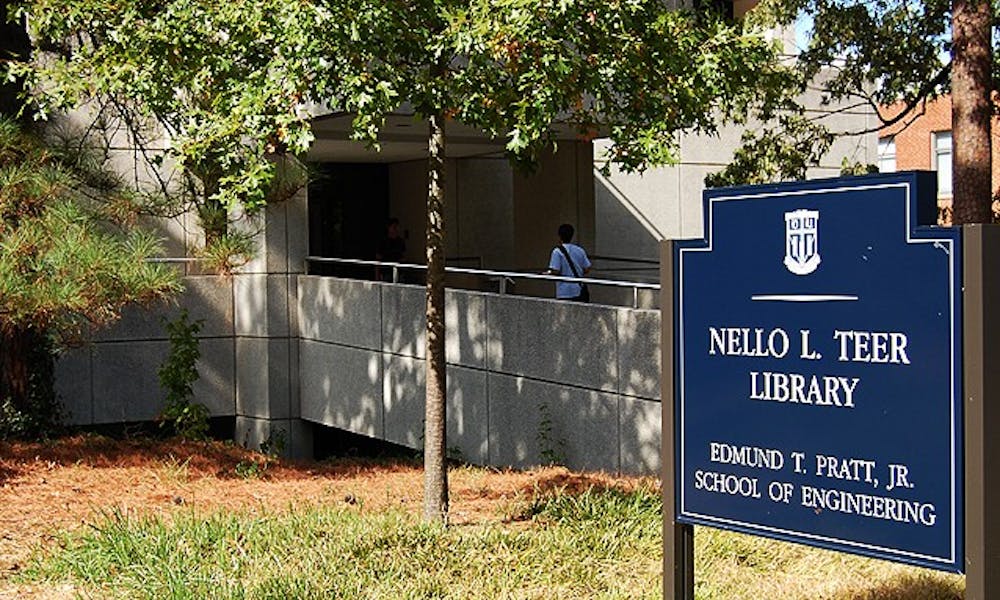As a senior biomedical engineering (BME) and electrical and computer (ECE) double major, Duke BME was quite the experience. Biomedical engineering is a broad field, and the coursework for the major follows a fitting path, exposing undergraduates to many different areas. I learned basics—starting at cellular biology and differential equations—to eclectic topics like materials science and physiology, to modern technologies including diagnostic imaging and medical device software design. This approach has its benefits as well as its drawbacks: on one hand, I got a taste of how broad the field really is and learned a little bit of everything, but at the same time, the major lacked a cohesive picture of what I was really meant to take away from it.
The BME curriculum can be divided into a few categories: first, "mathematics and natural sciences," which are introductory-level classes like physics, chemistry and biology. Next are rudimentary BME classes which are typically taken late sophomore and early junior year, including physiology, mechanics of solids, structure and properties of solids, modeling cellular and molecular systems, and signals and systems. Last are the upper-level electives, or area cores, which include both introductions to specific fields and their corresponding upper-level electives, including imaging, biomechanics and electrobiology, as well as a senior design course.
The curriculum is designed to narrow down to specific areas after an initial broad exposure to different topics so that the student can eventually specialize. A heavy emphasis is placed on the “interdisciplinary” factor. Students’ coursework draws from electrical engineering, mechanical engineering and various fields in biomedical engineering. While a good idea in theory, I spent so much time getting past the intro-level courses that it wasn’t until late junior year that I was finally able to learn in depth about a topic.
My first ECE class, (ECE110: Fundamentals of ECE) was awesome; it offered me a solid overview and introduction to the field. The lecture taught both digital and analog electronics concepts, and the laboratory component involved hardware tinkering and as well as software skills. In contrast, the first BME class (BME244: Quantitative Physiology with Biostatistical Applications) was disappointing. It was plain old physiology, very little problem solving, and one of the labs had me pee in a cup for science. Why couldn’t my first BME class actually introduce BME? With plenty of area cores available, why didn’t the first class I took offer a peek into each of those cool areas?
The frustration continued in the next few BME classes, as many classes led nowhere for me. EGR201 was a repeat of Physics 151 (Introductory Mechanics); ME221 (Structure and Properties of Solids) taught me things I had already learned in my ECE classes, chemistry, and some stuff about steel; and I’m not sure what BME260 (Cellular Modeling) was actually about. These were graduation requirements that were considered necessary for some areas of BME, but had very little content relevant to the area cores I wanted to pick.
While the original motivation behind requiring students to engage in this broad curricula seems good—having students learn about a few areas before delving more deeply—the classes should still have maintained an emphasis on BME. The only thing close to being relevant to BME that I learned in ME221 was “titanium has good properties for implants.” Why isn’t this material instead taught by the BME department, actually relevant to BME, and condensed into one semester instead of two? The opportunity cost for those who opt not to delve deeper in that area is a semester spent on a class they could have instead spent learning other skills that make BME majors even more flexible or interdisciplinary, such as a computer science course. While other majors have similar classes that can be argued to be “pointless,” it's a bigger problem for BME because of the amount of prerequisite coursework needed, limiting the number of higher level electives that can be taken.
I recently spoke with another senior BME major who said he felt that he wasn’t “really challenged or interested academically until the advanced BME electives, classes where [he] really learned what [he] came to Duke wanting to learn. For a lot of students, this meandering the first two years causes them to lose interest in BME and engineering.” It’s reasonable that the department would like students to develop a solid academic foundation through the first two years, but “these introductory classes unfortunately become 'weed-out classes' for lack of interest, rather than lack of trying,” the senior continued.
Understandably, this is something that many BME departments across the nation struggle with—the field is vast, relatively new, and educators are still trying to figure out the best approach to designing a rewarding curriculum. Many believe that Pratt is taking the curriculum in the right direction with its initiatives for engineering design-focused education. With the rollout of the BME Design Fellows, as well as the freshly implemented first-year design class that is now mandatory for all incoming Pratt students, students are being equipped with skills that are useful in engineering industry.
Greg Goldman, a BME/ECE senior, wrote in an email that the BME design fellow program “has been great in supporting the effort to prepare for a practical engineering role. Albeit still a bit disorganized during the first semester, the design fellow program partnered with some companies, helped students find internships and provided a seminar to teach some design skills. This support and focus on career-oriented engineering was just what I had hoped to find.”
However, while on the right track, there are still a few more things that Duke BME can improve on…
Martin Li is a Pratt senior whose column runs on alternate Tuesdays. This column is part one of a two-part series reflecting upon Duke BME.
Get The Chronicle straight to your inbox
Signup for our weekly newsletter. Cancel at any time.

